Choosing the right mortgage is a significant financial commitment, but circumstances can change over time. Whether interest rates have shifted, your financial goals have evolved, or you’re looking for greater flexibility, refinancing your mortgage can be a smart way to take control of your finances.
If you’re considering refinancing, here’s what you need to know about how it works, when it’s a good idea, and how to get started with Mortgage Connection.
What Does It Mean to Refinance a Mortgage?
Refinancing a mortgage means replacing your current home loan with a new one, often with better terms. This new loan may be with your existing lender or a new one. The key reasons to refinance include the following:
- Lowering your interest rate to reduce monthly payments and save on long-term interest costs.
- Tapping into home equity to access up to 80% of your property’s value (minus the amount still owed) for major expenses like renovations, education, or investments.
- Consolidating debt by rolling high-interest loans, like credit card debts, into a single lower-interest mortgage.
- Switching your mortgage type from a variable rate to a fixed rate (or vice versa) for more stability or added savings.
Refinancing can allow you to take advantage of new financial opportunities, but remember to weigh the costs against the potential benefits before making a decision.
How to Refinance Your Mortgage
At Mortgage Connection, we handle the complexities of refinancing so you can focus on your goals. Here are the steps to refinancing your mortgage:
Step 1: Connect with a Mortgage Broker
Your first step is to assess whether refinancing aligns with your financial objectives. Start by connecting with a mortgage broker who can review your current mortgage, evaluate your equity, and advise you on your options. At Mortgage Connection, we take the time to understand your needs and provide personalized advice to guide you to the best choice.
Step 2: Submit Your Application
Even though you already have a mortgage, you’ll need to complete another application for the refinance loan. This includes showing that you’re still financially fit to handle the new terms. Additionally, your lender may require a home appraisal to determine its current market value. Don’t worry—we are here to support you throughout this process.
Step 3: Approval & Funding
Once your application is approved, your legal representation will finalize the paperwork and make sure all conditions are met. From there, you’ll transition to the refinanced mortgage, with the funds either reducing high-interest debt, going toward major projects, or being used for other purposes, depending on your goals.
Refinancing requires careful navigation, but this three-step process provides clarity and efficiency to help you achieve your financial objectives with confidence.

When Is Refinancing a Good Idea?
While refinancing can help you save money and achieve financial flexibility, it isn’t the right fit for every situation. Consider refinancing in scenarios such as:
- Falling interest rates that are significantly lower than the rate on your current mortgage. This could reduce your monthly payments or save you money on interest over time.
- Significant home value appreciation gives you access to more equity, allowing you to achieve larger financial objectives.
- High-interest debt consolidation, where merging high-rate loans into your mortgage helps simplify your finances and potentially lowers your overall interest rate.
- As you approach the end of your mortgage term, this is an ideal time to refinance without incurring penalties.
While these scenarios make refinancing appealing, it’s worth noting situations where it may not be beneficial. If payout penalties and associated fees outweigh the savings, or if a recent drop in income or lower credit score affects your refinancing terms, it might be better to wait. A qualified mortgage broker can help you assess whether refinancing is right for you.
Benefits of Refinancing
Refinancing isn’t just about saving money. Below are some key benefits to consider:
- Lowering interest rates: Refinancing to a lower interest rate means smaller monthly payments and long-term savings.
- Debt consolidation: Merging high-interest loans into your mortgage can reduce overall financial pressure. For example, paying off a credit card debt with your refinanced mortgage can save thousands in accumulated interest.
- Accessing equity: Want to renovate your home or send your child to university? Refinancing allows you to tap into your equity for significant life expenses.
- Switching mortgage types: If you’re on a variable-rate mortgage and prefer stability amidst rising rates, refinancing to a fixed rate can provide peace of mind. Alternatively, if rates are expected to fall, a variable rate might offer potential savings.
By refinancing strategically, you can align your mortgage with your evolving financial goals.
Common Refinancing Costs
While refinancing has many advantages, it comes with associated costs that should be factored into your decision. These may include the following:
- Early payout penalties for breaking your existing mortgage before the term ends.
- Legal fees for finalizing new mortgage documents.
- Home appraisal fees to assess your property’s current value.
- Administrative costs associated with transferring lenders or processing the refinance.
Achieve Financial Peace of Mind
Your home is one of your biggest investments, and your mortgage doesn’t have to be a fixed burden. Refinancing allows you to take control, whether it’s freeing up cash flow, consolidating debt, or adapting to changing financial circumstances.
At Mortgage Connection, we’re here to help you through every step of the refinancing process in Alberta. Contact us to connect with one of our experienced brokers for personalized support, helping you unlock the full potential of your mortgage and achieve your financial goals.





14 thoughts on “How & Why to Refinance a Mortgage”
Comments are closed.